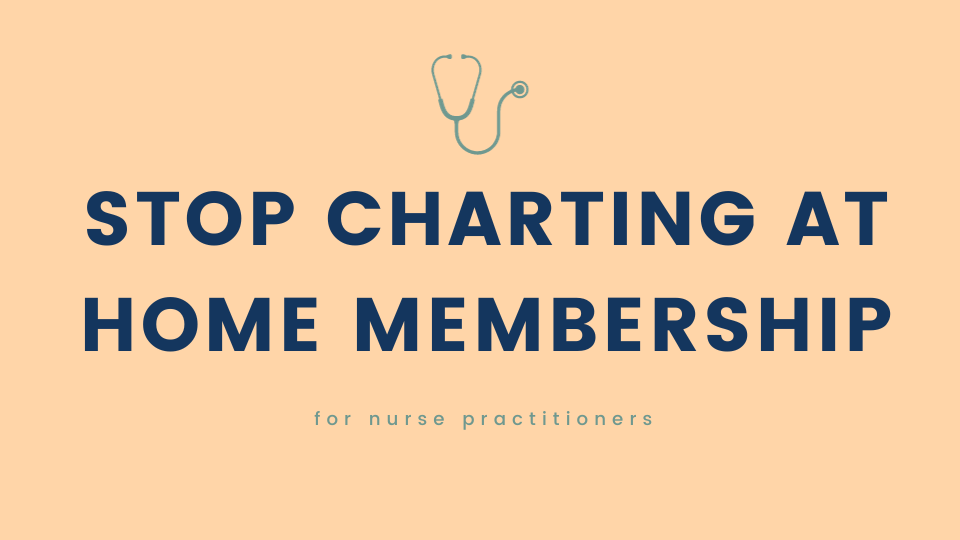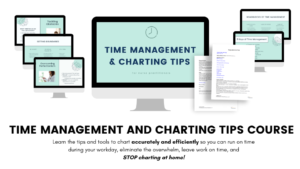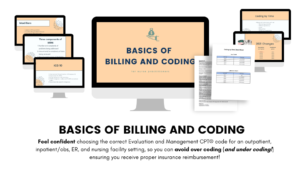The support, education, and community you need to STOP charting at home as a nurse practitioner!


Are you a nurse practitioner who is spending more time charting and less time with their families?
Who is feeling:
Subjective
Objective
You might not think it is possible.
But I see a……
Assessment
Nurse Practitioner Charting Burnout
Work-life Imbalance
RX
The STOP Charting at Home Membership for Clinic Based Nurse Practitioners

The support, education, and community you need to STOP charting at home!
Pay full price today and save $367!
One Time PaymentYou will be charged $197 now plus 11 monthly payments
Monthly Payment Plan
A family nurse practitioner, creator of The Burned-out Nurse Practitioner, and The Nurse Practitioner Charting School.
After overcoming healthcare burnout in 2015, I created The Burned-out Nurse Practitioner to help stressed-out nurse practitioners do the same.
Once I began coaching and talking with burned-out nurse practitioners, I realized CHARTING was the #1 cause of work-life imbalance and nurse practitioner burnout.
I reflected on my own journey with charting and how little I knew after graduate school. I recalled starting as a brand new nurse practitioner in a primary care clinic and the feelings of overwhelm I experienced. There are so many tasks nurse practitioners have to do besides seeing patients.
Through self-learning and trial & error, I implemented the same charting and time management tips I teach in this membership. And once I started coaching other nurse practitioners, they have dramatically improved their charting and time management!
Whether you are a nurse practitioner student, new graduate, or experienced APRN, it is possible to get your time back and the STOP Charting at Home Membership will get you there!
Discover what roadblocks and negative thoughts are holding you back from leaving the office by 5:00pm
Learn the time management and charting tips so you can have more time with your family at home!
Create a better work-life balance and conquer the burnout so you can love your nurse practitioner role!
Pay full price today and save $367!
One Time PaymentYou will be charged $197 now plus 11 monthly payments
Monthly Payment PlanThe membership includes 4 parts:
Monthly group coaching calls where you can get personalized advice and tips from Erica D the NP Charting Coach!
The core education includes proven charting and time management tips to help you STOP charting at home!
Monthly workshops on various charting topics so you can focus on one charting tip at a time while keep learning new tips!
Access to a private Facebook group full of equally burned-out members ready to support one another!
· Monthly group coaching calls (1 hour in length) held via Zoom
· Ability to get personalized charting advice by Erica D the NP Charting Coach
· Learn and connect with other nurse practitioners who are also struggling with charting!

The information and tips you need to STOP charting at home!
Video lessons include:

Implement these 4 steps and you will immediately save so much time charting!

Improve your charting and create healthy charting habits with the C.H.A.R.T.S. method!

For NPs too overwhelmed with improving your charting because of a backlog of open charts.
-Different charting topic each month which allows you to focus on one charting topic at a time.
-The workshops will be recorded, allowing you to view on your own time!
-Ongoing education allows you to keep improving yourself and implementing new ways to STOP charting at home.
Topics for 2024:
January: Setting charting boundaries
February: Focus on the core 4 steps to STOP charting at home
March: Charting tips for primary care
April: Charting Challenge- push yourself to make changes to your charting
May: Ask me anything related to practice, life, etc.
June: Make self-care a priority month
July: Save time charting with Freed AI
August: New grad charting tips
September: Creating problem focused chart notes
The STOP Charting at Home Membership includes access to a private Facebook Group!
The group is full of nurse practitioners who are also struggling with charting and nurse practitioner burnout!
This private nurse practitioner community will provide the support and accountability you need to improve your charting and overcome NP burnout.

These courses are no longer sold separately!
The STOP Charting at Home Membership includes access to:
This course will teach you:

This course will teach you:

This course will teach you:

Time Management and Charting Tips Course: 3 CE hours.
Basics of Billing and Coding: 1.5 CE hours.
Legal Issues with Charting: 1.5 CE hours.
These courses are approved for continuing education hours through The Elite Nurse Practitioner. The Elite Nurse Practitioner is an accredited educator of nursing continuing education through the American Nurses Credentialing Center’s Commission on Accreditation.
Pay full price today and save $367!
One Time Payment12 monthly payments of $197
You will be charged $197 now plus 11 monthly payments
Monthly Payment PlanI offer a 100% money back guarantee. If you’ve reviewed the content, participated in the coaching calls, and applied the charting tips and are not satisfied with the decreased time you spend charting, I will give you your money back– hassle free!
I believe in the value of this program and the information is something I have used personally. I strive to help overwhelmed NPs learn how to STOP Charting at Home!
But I also know it may not be right for you! Be sure to reach out if you have any questions or concerns.
Any clinic based (outpatient) nurse practitioner who is:
A new graduate who is ready to create helpful time management habits and learn charting tips.
OR
Experienced who is overwhelmed with the excessive amount of documentation, previously tried time saving tips that failed, and who are ready to get their life back!

It is true, a lot of the tips I teach nurse practitioners are easy to make on their own. But if changing your charting were so easy, you would have been doing it by now!
The mindset shift and commitment to habit change are the hardest part while trying to keep up with the demands of patient care. By investing in yourself, you are already showing yourself the commitment to make changes to STOP Charting at Home and get your life back!
You may be thinking “I can change the charting by myself.” And it is true, you can find many time management and time saving tips on the internet. However, I have compiled these tips and related to what nurse practitioners do.
I also know that the accountability and community offered through the membership will get to the results you know you need! My favorite part of the membership is when nurse practitioners realize they are not the only ones struggling with charting.
This membership is full of nurse practitioners who are equally burned-out, sick and tired of charting at home, and ready to support one another to make a change!

If you get paid $50/hour as a nurse practitioner, it will take less than 4 hours/month of your time to cover the cost of STOP Charting at Home Membership.
But…. if you are currently spending 2 hours a day on charting- nights and weekends (unpaid time),
and this membership can help you STOP charting at home,
you gain 10-15 hours per week of your time.
Which means the 4 hour/month investment equals 40-60 more hours of your time!!!
What would you do with an extra 40-60 hours per month?
That’s Ok! Of course we wish we had the perfect office setting equipped with the perfect charting system. However, this is not reality. That’s why this membership offers all of the support, education, and community you need to STOP charting at home.
This program was designed for you, the busy, full-time NP! Upon purchase of the membership, will have instant and annual access to the content. This gives you one whole year to view the information and complete the courses.
Lessons are short and straight to the point! Plus, you will learn how to save time charting- so you’ll have more of it!
You can’t afford not to!
If you are spending 10-15 hours a week catching up on charting, you are likely not getting paid for that time.
Plus, look at the lack of time for self-care, decline in personal health, struggles in your personal relationships, etc. that are negatively impacting your life.
The core courses of the STOP Charting at Home Membership include continuing education, so ask your employer to cover the cost!
The STOP Charting at Home Membership benefits both you and your employer because
This membership will help clinic based/out patient care nurse practitioners!
The goal of the membership is to build a community of NPs who are struggling with charting.
The content of the membership can be applicable to primary care, urgent care, specialty clinic, etc.
The core courses of include CE hours!
Time Management and Charting Tips Course: 3 CE hours.
Basics of Billing and Coding: 1.5 CE hours.
Legal Issues with Charting: 1.5 CE hours.
This course is approved for continuing education hours through The Elite Nurse Practitioner. The Elite Nurse Practitioner is an accredited educator of nursing continuing education through the American Nurses Credentialing Center’s Commission on Accreditation.
· Continue to spend more time working and less time with your family.
· Feel overwhelmed day after day and continue to be behind with charting.
· Continue to feel burned-out and contemplate leaving your nurse practitioner role.
If you are ready to STOP charting at home, recreate work-life balance, and get your life back, check out
Pay full price today and save $367!
One Time Payment12 monthly payments of $197
You will be charged $197 now plus 11 monthly payments
Monthly Payment Plan